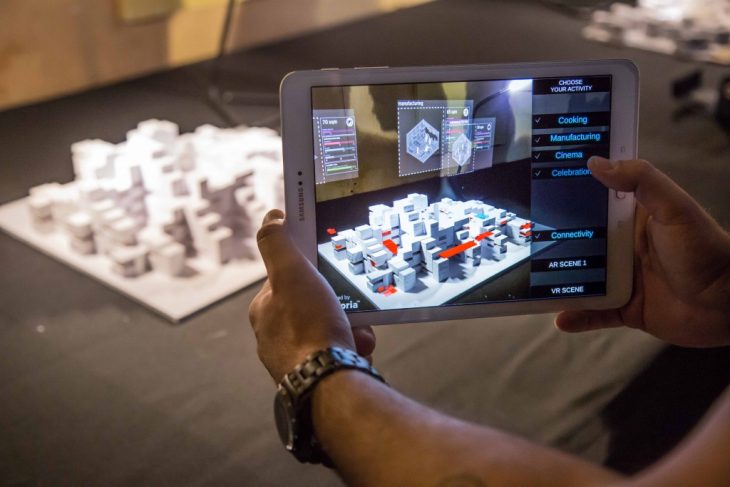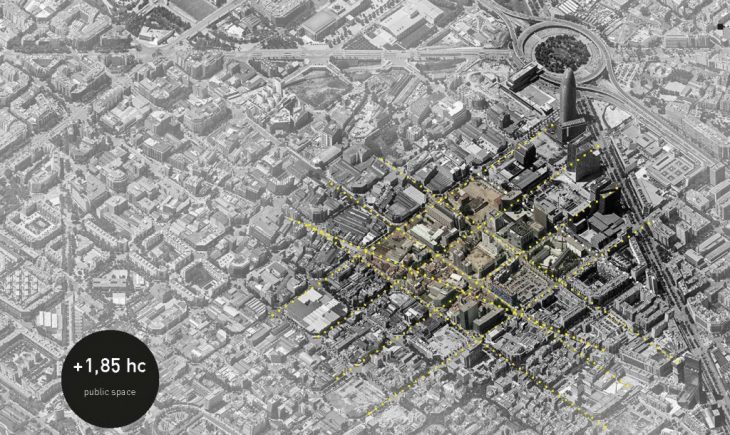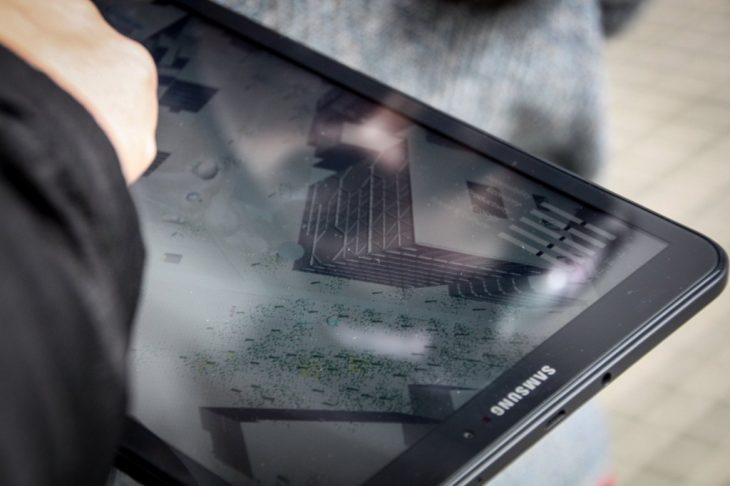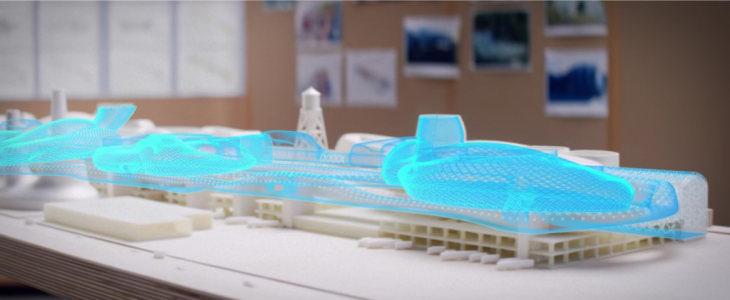DESIGN FOR THE RESPONSIVE CITY
Faculty: Areti Markopoulou
Faculty Assistant: Marco Ingrassia
Computational Expert: Starsky Lara
Technologies of production, communication and representations are constantly shaping the physical and relational systems of the urban environment. If Responsive technologies can change the way we inhabit, how can we use them to change the way we design our cities?

AR interface – MaCT Responsive City course 2016
Citizens receive and produce a continuous flow of information, thanks to personal devices, user interfaces and the network of sensors and big data management systems. In the last decades we have lived in the Information age, mainly operated by the internet of the things and mobile connectivity, with a radical impact on the way citizens behave and interact in the urban environment. The consequent urban model of the smart city proposes to overlay the existing urban spaces and infrastructures with a technological layer capable to enhance efficiency and interconnectivity, but it is not able to change the physical model of the city and it is being based on a top-down process which neglects citizens’ engagement.
Responsive and immersive technologies can change the way we inhabit and experience our urban environment. Technologies of gamification or mixed reality (MR), for instance, can transform the city in a play field, overlapping the digital in the physical realm, altering conventional hierarchies and enhancing interactivity between unknown users. Far from being passive consumers of information, in the Experience age users can visualize a new mixed reality, change their perception of the space, interact with other users, and, eventually, express informed and real time desires on altering the physical urban context they are inhabiting.
The overlapping of digital data into physical space and the immersive visualization of spatial configurations enhances individual awareness and the desire to actively participate in the design of the urban public space.
In the Design for the responsive City seminar students will explore methodologies and define new protocols to use gamification and mixed realities interfaces as a platform for enhancing user-urban interactions and as tools for the application of technologically enhanced participatory design processes.
Students will work in the case study of the Superblock in Barcelona, the first Poblenou pilot project of an alternative mobility model that liberates space to be used by the public.
The first phase of the seminar is to conduct a participatory survey to collect data from the citizens’ desires and use of the public space. This survey will rely on the gaming interface Superbarrio (developed in the Design for the Responsive city seminar 2016-17) as a tool to collect geolocated data on the citizens’ desires, opinions and expectations.
 Superblock area in Barcelona
Superblock area in Barcelona
In the second phase of the seminar, the collected data will be visualized on maps and connected to the real-time and historical open data from the city of Barcelona. Those maps, (extracted by the users desires/needs and the context data), will serve as the base for developing a variety of design proposals.
In the third phase of the seminar, students will use Augmented and Mixed Reality platforms for visualizing the different design proposals. The platforms will be offered to users recollecting their feedback based, this time, on immersed experiences and direct visualization on the existing physical public space.
The Seminar will conclude with the observation and scientific evaluation of the technologically enhanced participatory design processes, as well, as with envisioning the new relation among designers, users and decision makers within that context.
Students will be trained in the use of Unity3D to design AR/MR interfaces in a 2 days intensive workshop.

Superbarrio gaming interface in the Superblock – MaCT Responsive City seminar 2017

Mixed Reality visualization with Hololens – Greg Lynn Form – Venice Biennale 2016